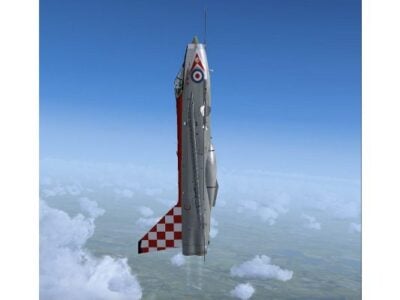
The latest listing of the TOP500 supercomputers in the world has seen two European systems climb the rankings.
The systems, both built by Atos, were the main changes in a list that has moved little in the last six months.
The JUWELS Booster Module debuts at number seven on the list. The BullSequana machine was recently installed at the Forschungszentrum Jülich (FZJ) in Germany and uses AMD EPYC processors with NVIDIA A100 GPUs for acceleration. It is part of a modular system architecture where a second, Intel Xeon-based JUWELS Module is listed separately on the TOP500 at position 44. These modules are integrated by using the ParTec Modulo Cluster Software Suite. The JUWELS Booster Module was able to achieve 44.1 HPL petaflops, which makes it the most powerful system in Europe
HPC5, a Dell PowerEdge system installed by Eni in Italy is ranked 8th. It achieves a performance of 35.5 petaflops using Intel Xeon Gold CPUs and NVIDIA Tesla V100 GPUs. It is the most powerful system in the list used for commercial purposes at a customer site.
The ARM-based Fugaku supercomputer at Riken in Kobe, Japan solidified its lead with a hardware upgrade from 7,299,072 cores to 7,630,848 cores. This increased the performance to 442 petaflops, up from 416 petaflops in June. However the new mixed precision HPC-AI benchmark saw 2.0 exaflops, besting its 1.4 exaflops mark recorded six months ago
To get on the list, a supercomputer has to deiver 1.32 petaflops on the High Performance Linpack (HPL) benchmark, a small increase from 1.23 petaflops in June. The total performance of all 500 supercomputers in the list grew from 2.22 exaflops in June to 2.43 exaflops on the latest list, with a total number of cores growing from 145,363 to 145,465.
Next: Supercomputer top ten
Summit, an IBM-built system at the Oak Ridge National Laboratory (ORNL) in Tennessee, remains the fastest system in the US with a performance of 148.8 petaflops. Summit has 4,356 nodes, each one housing two 22-core Power9 CPUs and six NVIDIA Tesla V100 GPUs.
Sierra, a system at the Lawrence Livermore National Laboratory in California, is ranked third with an HPL mark of 94.6 petaflops. Its architecture is very similar to that of Summit, with each of its 4,320 nodes equipped with two Power9 CPUs and four NVIDIA Tesla V100 GPUs.
Sunway TaihuLight, a system developed by China’s National Research Center of Parallel Computer Engineering & Technology (NRCPC) and installed at the National Supercomputing Center in Wuxi, is listed at number four. It is powered exclusively by Sunway SW26010 processors and achieves 93 petaflops on HPL.
At number five is Selene, an NVIDIA DGX A100 SuperPOD installed in-house at NVIDIA Corp. It was listed as number seven in June but has doubled in size, allowing it to move up the list by two positions. The system is based on AMD EPYC processors with NVIDIA’s new A100 GPUs for acceleration. Selene achieved 63.4 petaflops on HPL as a result of the upgrade.
The second new system at the top of the list is Dammam-7, which is ranked 10th. It is installed at Saudi Aramco in Saudi Arabia and is the second commercial supercomputer in the current top 10. The HPE Cray CS-Storm systems uses Intel Gold Xeon CPUs and NVIDIA Tesla V100 GPUs. It reached 22.4 petaflops on the HPL benchmark.
Intel continues to dominate in TOP500 processor share with over 90 percent of systems equipped with Xeon or Xeon Phi chips. Despite the recent rise of alternative processor architectures in high performance computing, AMD processors (including the Hygon chip) represent only 21 systems on the current list, along with ten Power-based systems and just five Arm-based systems. However, the number of systems with AMD-based processors doubled from what it was six months ago.
The breakdown in system interconnects is largely unchanged from recent lists, with Ethernet used in about half the systems (254), InfiniBand in about a third of systems (182), OmniPath in ten percent (47) and Myrinet in one system. The remainder use custom interconnects (38) and proprietary networks (6). InfiniBand-connected systems continue to dominate in aggregate capacity with more than an exaflop of performance. Since Fugaku uses the proprietary Tofu D interconnect, the aggregate performance in the six proprietary networks systems (472.9 petaflops) is nearly equal to that of the 254 Ethernet-based systems (477.7 petaflops)
China continues to lead in system share with 212 machines on the list, beating the US at with 113 systems and Japan with 34. However, despite the smaller number of systems, the US continues to lead the list in aggregate performance with 668.7 petaflops to China’s 564.0 petaflops. Thanks mainly to the number one Fugaku system, Japan’s aggregate performance of 593.7 petaflops edges out that of China.
The list is compiled by Erich Strohmaier and Horst Simon of Lawrence Berkeley National Laboratory; Jack Dongarra of the University of Tennessee, Knoxville; and Martin Meuer of ISC Group, Germany.
Related supercomptuer articles
- AMD DETAILS GPU FOR EXASCALE COMPUTING
- EUROPEAN EXASCALE CHIP PROJECT UPDATES ITS ROADMAP
- HPE COMPLETES CRAY INTEGRATION, SHIPS ARM SYSTEM
Other articles on eeNews Europe
- Synopsys buys Moortec to take on Mentor
- Samsung uses Xilinx FPGA for first adaptable computational storage drives
- TSMC confirms 5nm fab in US
- Peugeot, Altran team for driverless car testing
- Covid changes are permanent says Dialog CEO
 If you enjoyed this article, you will like the following ones: don't miss them by subscribing to :
eeNews on Google News
If you enjoyed this article, you will like the following ones: don't miss them by subscribing to :
eeNews on Google News



